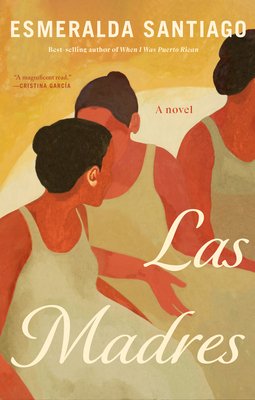Las Madres by Esmeralda Santiago
Review of Las Madres by Esmeralda Santiago
Las Madres by Esmerelda Santiago (2023). Published by Knopf.
Many of the books I read in general come from a simple act: of wandering around my local library, and just picking up anything with an interesting title or cover. I’ve found a lot of books I ended up loving through this way, and it also pretty much keeps me on my toes when it comes to diversifying the literature I read.
That said, I found this book by accident. It was placed on the new fiction shelf in a way where you could only see the pages, and the spine was pressed up against the wall instead of facing me. I picked it up actually to fix it, as a fellow author I could be so sad seeing how someone would ignore such a book because of it, and then I saw the dancing girls on the cover.
Because I had just read Nicole Cuffy’s Dances, I was more interested at the time of reading narratives about women of color in the dance world. So when I cracked open this book and saw the synopsis on the inner cover, I knew I wanted to read it immediately.
In total, it took me about three days to get through this book. It was right up my alley in terms of narrative style—that’s my first initial thought until we dive deeper into this review.
Let’s get into it!
Setting across two different periods, a daughter and her mother rediscover the links between past and present.
The story opens up in the past, in Puerto Rico during 1975. Our main character in this section of Lux, who lives with her parents, prominent scientists and intellectuals on the island. Lux lives a life surrounded by certain luxuries, including how her parents teach her multiple languages in her daily life.
Another luxury is that Lux gets to attend the local dance academy. There, she realizes that she is the only Black one in a group full of light skinned girls. And in Puerto Rico during this time, and even sometimes today, there is some internalized and embedded racism going on.
Despite her talent for dance, Lux sometimes get overlooked because of the fact she is Black. However, things are about to change dramatically. When in the car with her parents, they veer off of the road and into a ravine, killing both of them and leaving Lux in a coma.
When she wakes up, she can no longer remember anything about her past life. She’s taken in by her grandparents, on of which dies not long after allowing her into his home. Now forced to rebuild a life and live with the knowledge that she is alone, without her parents, Lux struggles with becoming more functional again.
All of this is interspersed with sections of the novel set in the present day. This is 2017, and Lux, having immigrated to the United States many years ago, has a daughter named Marysol.
Now an adult, Marysol wants to know more about her mother and her past, especially as her father is no longer with them. He died years prior. leaving the mother and daughter alone in the world without him to help them navigate it.
But Lux still has her memory issues, and there are many gaps where they should not be able her life. In their current situation, they’ve established deep connections with the other Puerto Ricans in the Bronx, and some of the other daughters suggest planning a trip back to the island.
So they do just that, and then we learn a major secret, one that unearths a lot of old trauma and family history in a way that none of them could have expected.
Overall Thoughts
I think this was such a well-written novel, although I tend not to go for novels that jump between past and present as much as this one does. Each chapter alternates pretty much, meaning we toggle back and forth to fill in the gaps.
That said, I found Lux’s story especially to be compelling. The framework of exploring it through her daughter, allowing us the chance to see how it creates ripple effects across generations, is such a brilliant one to me in the context of this novel.
And while we do not really focus on those dance elements later on, I still found that section of the book to be fascinating as well. All in all, I enjoyed this a lot!
Follow me below on Instagram and Goodreads for more.


![Jeju-do (제주도) is one of those places that reminds you of how stunning the world is
[7.12.2024 부터 7.14.2024 까지]](https://images.squarespace-cdn.com/content/v1/5ea1f794501b7153b29e7cd7/1721033601522-554E76HR01JUHDWZBJ1I/image-asset.jpeg)









